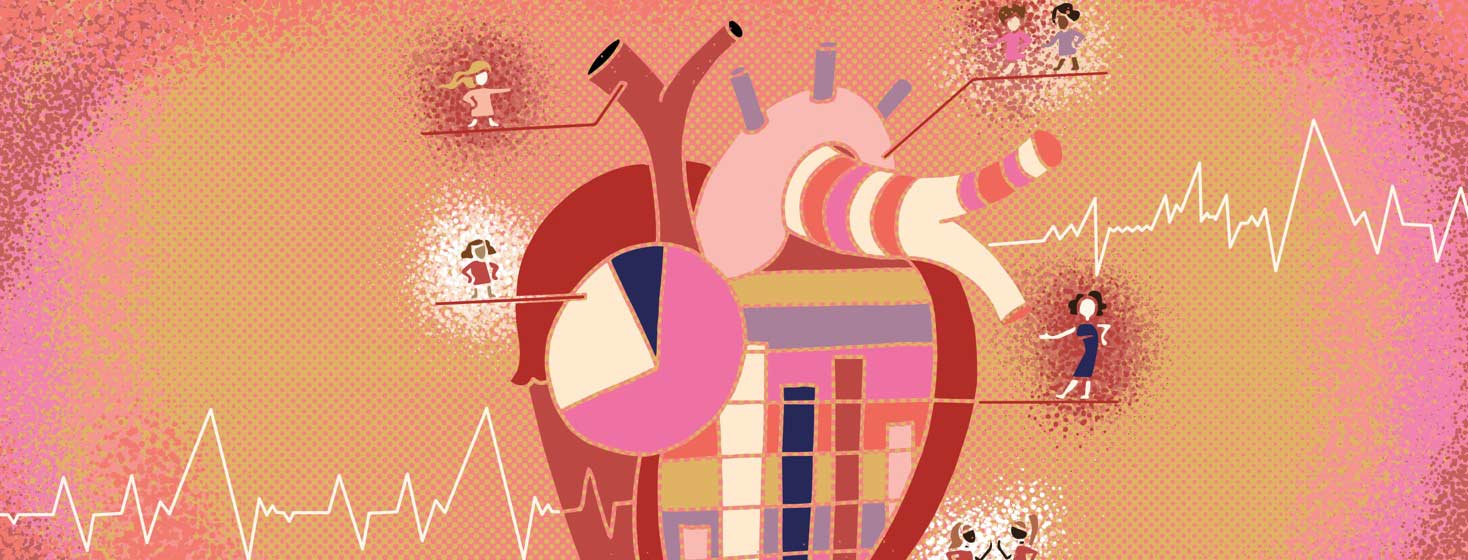Heart Disease in Women: What to Watch Out For
Most people are unaware that heart disease and strokes are the number one killer in women, causing 1 in 3 women’s deaths annually.1 If you break that down a little further you will see that heart disease claims a women’s life every ONE MINUTE. If you continue to break that down further you will find that heart attacks alone, claim the lives of 3.3 MILLION WOMEN annually, while strokes claim 3.2 million lives annually. The positive news in all this is that 80% of all cardiac events (strokes included), can be prevented with education and lifestyle changes.
Presenting differently in women
Most of the general public has no idea that heart problems are such a big health issue and the number one killer for women. This is due to the fact that we most often hear about men having heart issues. We hear about men complaining of the traditional signs and symptoms of a heart attack. While most people, women included, have no idea that a heart attack can and often does present vastly different in women. There is a high likelihood that women may not present with the typical signs and symptoms we have all been taught to watch for.
So let’s look at some statistics about heart disease and women:1,2
- Heart disease and stroke are the cause of death in 1 out of 3 women each year. It’s estimated that heart disease kills one woman every 80 seconds.
- There are an estimated 44 MILLION women in the United States alone who are affected by heart disease.
- Heart disease is the leading cause of death for Hispanic women, killing approximately 21,000 yearly.
- Heart disease and strokes are the leading cause of death in African-American women, killing over 48,000 women yearly!
- 80% of heart disease and stroke events could be prevented by lifestyle and education.
- Hispanic women are more likely to develop heart disease 10 years earlier than Caucasian women.
- Symptoms of a heart attack can be much different in women vs men
- Women who get involved in the Go Red for Women movement live healthier lives.
These statistics are sobering. One of the above facts that need to be discussed further is the fact that the signs and symptoms of heart attack can look very different in women & men! So let’s look at typical signs of a heart attack that many know, and signs seen in women.
Signs of a heart attack in men
Pain: may have pain in between shoulder blades, arm, chest, jaw, left arm, or upper abdomen, and pain may occur at rest. The pain is often be explained as an elephant on the chest or crushing chest pain!
Other symptoms dizziness, fatigue, lightheadedness, clammy skin, sweating, heartburn, indigestion, nausea or vomiting, a feeling of anxiety or impending doom, or shortness of breath!
Signs of heart attack in women
Pain: Uncomfortable pressure, squeezing, or pain in the center of your chest. It may either last a few minutes or come and go. (They don’t generally have the crushing chest pain that men do!). They may also feel pain in one or both arms, the back, or the stomach.
Other symptoms: shortness of breath with or without chest pain, breaking out in a cold sweat, nausea, fatigue, or lightheadedness.
As with men, the most common sign is chest pain of some kind. However, women are more likely to experience fatigue, nausea, shortness of breath, or pain in the back or jaw.
Education is key
The biggest way we as women can prevent heart disease is EDUCATION! Any woman with the right information, education, and care by physicians can treat, prevent, or even delete the risk of heart disease. A person with heart disease is also at risk for a stroke. Not just a heart attack. So let’s look at the signs and symptoms of a stroke. Let me just stress that if you or a family member feels that they are having a stroke, one should get medical attention immediately!
Signs and symptoms of stroke
Some common signs and symptoms of a stroke include:3
- Sudden numbness or weakness of the face, arm, or leg, especially on one side of the body.
- Rapid confusion, trouble speaking, or understanding.
- Quickly deteriorating vision or blurred vision in one or both eyes.
- Sudden trouble walking, dizziness, loss of balance or coordinationSudden severe headache with no known cause
Take the time
Bottom line, if you develop any of the above symptoms at any time you should immediately call 911 and get checked out. Especially if you have a high familial history of any cardiac issues. Like with most things in life, we are in the best place if we take the time to educate ourselves. So take time to read up on the conditions you live with as well as the ones you are at risk for just in case that you may someday have to live with them.

Join the conversation